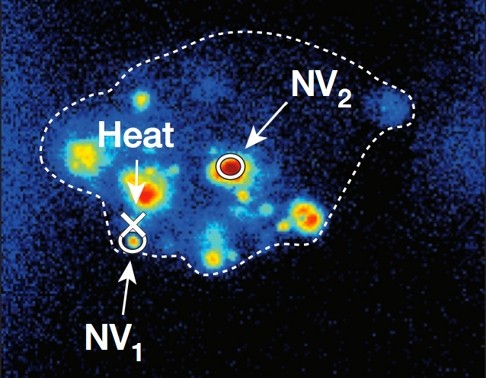
Can the world’s smallest nano-thermometer be used to diagnose cancer early? Chinese team sees ray of hope in new breakthrough
Researchers find way to gauge the temperature of ‘sick’ cells by injecting them with light-emitting particles, or ‘quantum dots’

Chinese scientists claim to have developed the world’s smallest thermometer, which is capable of measuring the temperature of individual cells and gauging their health.
Some believe the technological breakthrough will later find important applications in cancer therapy.
Each instrument is made of tiny particles only a few nanometers in diameter. The minuscule particles contain light-emitting materials that makes it easy for them to enter a living cell.
As the cell’s temperature rises, the particles produce increasingly stronger light - producing a visual effect akin to glowing fish swimming in a lake at night, but on a dramatically smaller scale.
“This will help our fight against cancer,” said Dr Han Rongcheng, a lead scientist of the research project. Han works with the Chinese Academy of Sciences’ Institute of Genetics and Developmental Biology in Beijing.
Scientists have long been aware that tumour cells can be killed by very high temperatures, but the clinical use of thermal therapy has been extremely limited due to the collateral damage on healthy cells.
In order to perform such treatments safely, doctors must be incredibly careful so that they apply the right dosage to kill the cancerous cells without harming the healthy ones.
This means they would need to know the precise change in temperature of each targeted cell, as well as those around it.
But such technology has not been at their disposal, which makes the latest breakthrough so full of promise.
“With the help of nano-thermometers, physicians may one day give patients the perfect dose that can wipe out all the bad cells without hurting the healthy tissue,” Han said.

Many tumour cells have unusually high internal temperatures, so the new technology might also help with their early diagnosis, he added.
If you place a thermometer containing mercury inside a patient’s armpit, its colour will not change. But if the device is shrunk to a billionth of the size and viewed through an infrared laser microscope, quantum physics kick in and convert the electric or thermal energy into light.
Moreover, the smaller the particle, the brighter the glare due to the stronger effect of the quantum mechanics at work.
These particles are usually made of semiconductors like selenium. In the 1980s, American physicist Mark Reed coined the term “quantum dots” to describe them.
The advantages of these quantum dots have attracted much research interest and spurred a race to exploit their use in many sectors in recent years, from medical science to television screens.
But Han’s team say they have now moved one step ahead of their competition.
The Chinese team was not the first to check the temperatures of cells using such “quantum dot thermometers”. Similar prototypes have been developed by other teams. But previous experiments and devices have been hindered by serious roadblocks.
The biggest problem was distortion caused by the cell itself. For example, biochemical elements in the cell, such as its pH level or ionic strength, could affect the level of brightness, making the temperature readings unreliable.
In their paper, which was published in the journal Scientific Reports last week, Han and his colleagues said they had solved the problem of environmental distortion for the first time by blanketing the quantum dots in a thin protective membrane.
“This is like the layer of glass that covers a mercury metre,” Han said in a telephone interview with the South China Morning Post.
“The layer separates the light-emitting materials from external elements, while also allowing light to pass through.”
The researchers encountered many challenges along the way, one of which was finding the most suitable materials to use in their experiments. It took them over five years to fabricate the nano particles in the way they wanted, they said.
However, some problems still need to be solved before the technology can be used on patients, Han said.
The team is still in the process of calibrating the device’s readings so it can be converted into traditional forms of measurement, a job somewhat akin to converting degrees Celsius into Fahrenheit, they said.